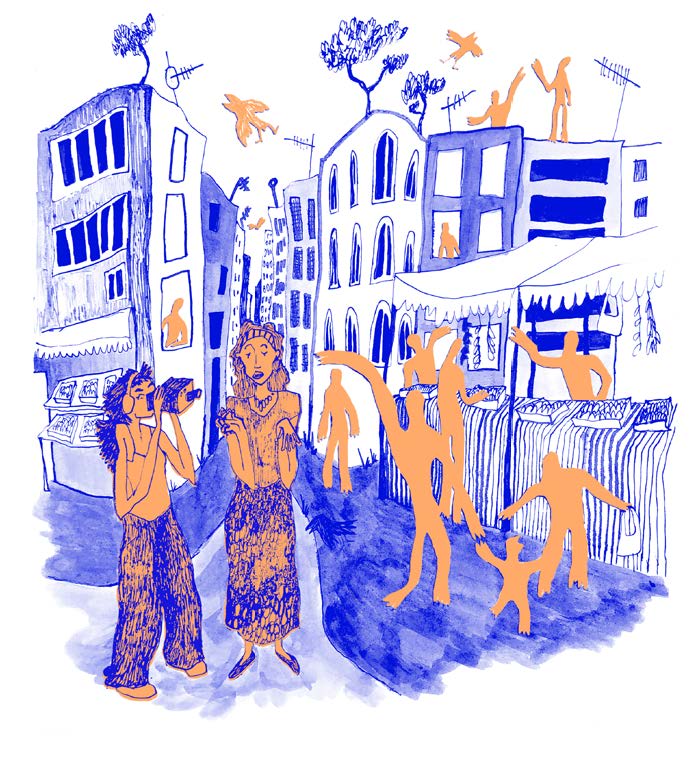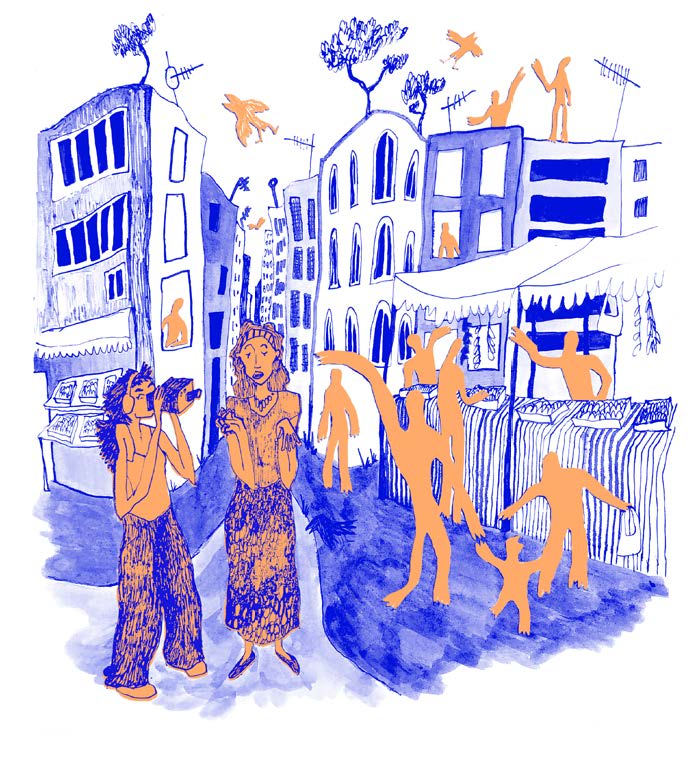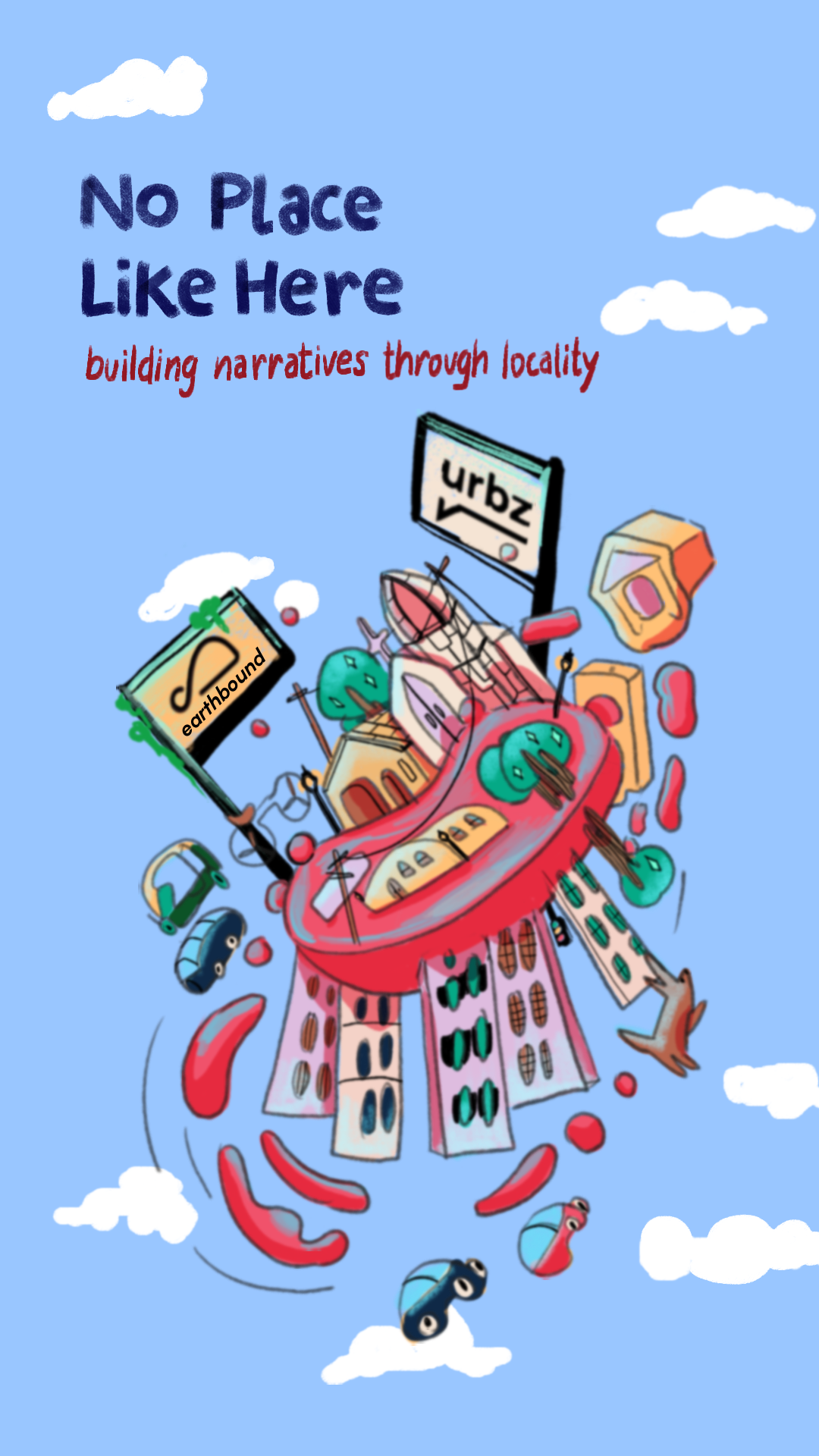No Place Like Here - building narratives through localities

No Place Like Here - building narratives through localities

'Placing Stories' was an online workshop organised on Feb 2nd, 2024 by Earthbound and Urbz, led by Rahul Srivastava.
It centred around place-making as a conscious part of building film narratives, to enrich the storytelling process.
The exchange between urbanists and filmmakers that followed enriched both sides. Practising urbanists learned about the spontaneous attention that filmmakers pay to historical, cultural and ethnographic details for each location. Conversely, the session opened the doors to take the concept of locality (beyond location and situation) into the world of filmmaking.
Locality is a concept that anthropologist Arjun Appadurai sharpened in his celebrated essay ‘The Production of Locality’, in which he pointed out that human beings are active agents in creating the contexts in which they are embedded. We don’t simply live in or occupy specific space and time. Our imaginations constantly interact with and shape our perceptions – while contributing to the material construction of the place we inhabit.
Appadurai engaged with Henri Lefebvre’s major theoretical contribution - 'The Production of Space', which opened up the idea of inhabitants as active co-creators of their spatial context. Appadurai brought to this discussion the specificity of locality, using an anthropological lens. He acknowledged the enormous contribution that anthropology made in producing narrative after narrative of cultures from around the world. This culminated in a living archive, a testimony to the dynamic diversity of human lives. Rather than see each ethnography as a passive document produced by the anthropologist about other cultures, he encouraged an interpretation of ethnography as a constant interplay of narratives between all subjects involved. The anthropologist is but one more storyteller in the co-creation of a monograph which is an account not of a fixed context but of the process of producing one.
In a related essay, Appadurai also showed how locality and identity could fuse and become global, mobile products, transgressing boundaries. This happens through a process that is captured by imaginative re-constructions of what the varied aspects of contemporary life mean – whether expressed as shape-shifting personal identities, the re-making of neighbourhoods through migrations and mobilities or the re-location of the self in strips of constantly evolving ‘scapes’ rather than in fixed ‘places’. Yet what must not be forgotten is that these floating, fragmented worlds are eventually anchored somewhere. Locality inevitably emerges as an inescapable frontier. Even the most global expressions of mobility, say an international airport, are rooted somewhere specifically local. All transnational flows of global products are warehoused in some physical space. Humans are physical entities, embedded in material constraints, always occupying space and time in specific ways no matter how instantaneously they communicate to one another, virtually or otherwise, across thousands of miles.
Whatever the global context of life, there is always a local point where it anchors itself. And that locality is a dynamic and constructed space. This production of locality is expressed in a neighbourhood which is a powerful theatre in which ‘imagination’ is an essential ingredient. It is through this imagination that people infuse their lives with meaning - the people they live with, or the places which they live in. Often in that very order. No wonder that the concept of place gets taken for granted. It is the invisible context in which things happen. An invisibility that gets reflected in story-telling too.
Typically, primaeval acts of telling a story frame the narrative through a hierarchy of priority – beginning with chronology (once upon a time….), then personhood (there was a queen, king, farmer or slave) and finally location (who lived in a palace, kingdom or forest). Location as the third element of evoking context is often overlooked or simply subsumed into the temporal where it becomes a symbol of the time in which the story is set, its role limited to providing detail and texture and little else. It is presumed that it is only the protagonist who creates the drama whereas locality is the backdrop.
Of course, visual story-telling mediums, especially cinema, do give immediacy of context its due. The concreteness of a place, captured by the camera, demands a visual reconstruction of space in all its vivid detail. However, the difference between location (or place) vis-à-vis locality needs to be underlined. In visual storytelling, location as a valued marker of detail – either historical, cultural or in terms of atmosphere is undeniably valued. At the same time acknowledging locality as an animator of the story can and does tend to be overlooked. While characters and temporal plot movements are rightfully seen to be the energizers of the story, the potential of locality to do the same tends to be undermined.
What an anthropological reading of locality tells us is that it is actively produced. Therefore, it is as much part of the theatre of interaction between people and places and cannot be ignored or reduced to just a setting and context. It is intrinsic to the story in a fundamental way. Characters are as much shaped by their contexts as they shape and sculpt the worlds around them. They are not merely engaging with other characters, memories, emotions or historical forces but also the immediacy of the world in which they are embedded. This immediacy of interaction also constitutes the drama in their lives. It factors in levels of detail about local reality that otherwise tend to be generalized or subsumed in larger aggregates. It demands an embracing of a larger vocabulary of names, labels and varieties of expression than the usual generalizations stories work with. It can act as an antidote to nationalist short-hand representations of large swathes of cultures and people who otherwise get subsumed in the broadest labels possible. It also demands from viewers a higher standard of expectation about what constitutes labels and categories. It brings in details that are overlooked or presumed unimportant when in actuality they make a huge difference. To life and story alike. Locality multiplies the expression of human lives, settings, contexts, plot lines and twists in ways that feedback into the idea of artistic practice to open up unexpected possibilities.
The session with the constellation of filmmakers generated a rich debate on these points. Waves and waves of heated arguments, detailed reviews of the stories that the filmmakers were working with and spirited responses to the provocation that locality may be overlooked, even as location was astutely paid attention to, yielded rich material.
The second part of the session specifically looked at the problem in the context of climate change. Here the hugely influential work of writer Amitav Ghosh took center stage. In his work 'The Great Derangement', he showed how storytelling itself was a tool of engaging with climate change, either through repressing its collective memory or as a means of reactivating it via examining how language and narratives can equip us to tell stories in which we can realistically engage with lived real contexts. The book covers massive ground, taking us through complex conceptual configurations one moment and then providing us with navigational tools to literally escape the possibilities of floods in cities the next. If the idea of locality was blurry so far, the concreteness of climate change expressed through the text of Ghosh brought it close home like nothing else.
The filmmakers shared their engaging narratives – each with their rich engagement with history and context, and detailed ethnographic research. This only reiterated our conviction; that if there is to be a rich exchange of ideas about locality, then storytellers, especially those engaging with film, do have a special role to play. Conversely, storytellers can look towards place-makers and practitioners connected to localities and places as providing a small but significant contribution to their creative process.

Workshop Note:
'Placing Stories' is an online workshop organised by Earthbound and Urbz, and led by Rahul Srivastava. The workshop will centre around place-making as a conscious part of building film narratives, to enrich the imaginative storytelling process and help make a greater social impact.
Date: Feb 2nd 2024
Format: Online
Placing Stories
The Cinematic Production of Locality
How can the nature of locality be woven in film narratives, in a way in which “place” is considered not only as a physical subtext, but as a gaze through which the narrative enfolds? With the thematic focus on stories of climate change and the environment, this workshop aims to develop a dialogue between place-based practitioners and filmmakers.
The workshop is led by Rahul Srivastava, anthropologist and co-founder of Urbz and screenwriter. He brings his background in anthropology and visual ethnography to urbanology, the practice that energises much of Urbz's work.
Urbz is an action and research collective specialised in participatory urban planning and design, governance and architecture. Urbz believes that residents are experts of their neighbourhoods. It has offices in Mumbai, Geneva, and Bogota with a media-focused office in Paris.
Through this workshop, Rahul is interested in translating his experience and knowledge of place-making to storytelling, in order to create stronger narratives with greater social impact.
